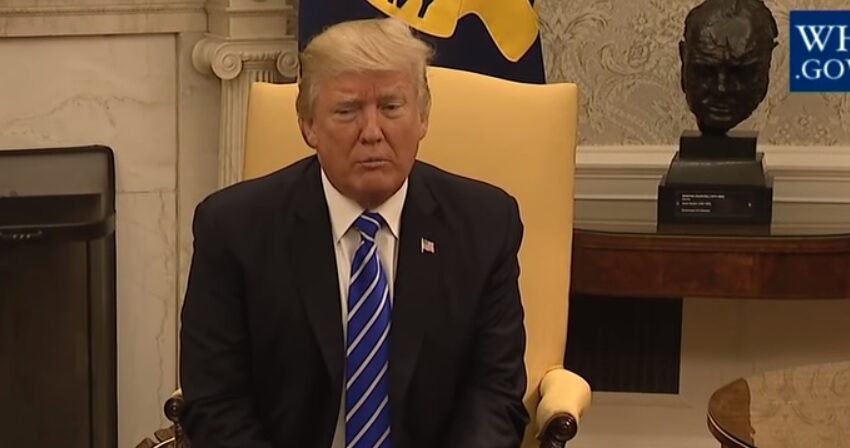Would Trump adopt more restrictive policies on business immigration?

Credit: White House.
Companies hope huge drop in denial rates for transferring L-1B employees, seen over last three years, is not reversed?
By Arun Kumar
With ten days to go for the return of Donald Trump to the White House, companies engaged in major projects are wondering whether the incoming administration would adopt more restrictive policies on transfer of high-skilled employees into the U.S.
Companies will wait and see if the huge drop in denial rates and Requests for Evidence over the past three years for such transfers, facilitating the completion of projects and foreign investment, would be reversed, Forbes reported.
READ: Trump sides with Musk in H-1B war (December 29th, 2024)
Forbes cited a National Foundation for American Policy analysis showing denial rates for L-1B petitions dropped from 25.3% in FY 2021 to 10.2% in FY 2024.
In earlier years, U.S. Citizenship and Immigration Services denied many L-1B petitions across different administrations. When Barack Obama was president, in FY 2016, USCIS denied 22.8% of L-1B petitions, preventing many companies from transferring employees with specialized knowledge into the United States, according to Forbes.
Denial rates for L-1B petitions reached their height during the Trump administration: 33.7% in FY 2019 and 31.9% in FY 2020. The L-1B denial rate fell to 25.3% in FY 2021, 19% in FY 2022, 15.5% in FY 2023 and 10.2% in FY 2024.
An L-1B visa allows an employer “to transfer a professional employee with specialized knowledge relating to the organization’s interests from one of its affiliated foreign offices to one of its offices in the United States,” according to USCIS.
The Request for Evidence rate on L-1B petitions has improved significantly for employers over the past three years. In FY 2019, 2020 and 2021, the percentage of completed cases for L-1B petitions with a Request for Evidence ranged between 55% and 58.4%, according to Forbes.
However, USCIS issued a Request for Evidence on completed L-1B cases 40.5% of the time in FY 2022, 38.2% in FY 2023 and 26.7% in FY 2024.
Several factors combined to drive down L-1B denial rates, it said citing attorneys. “First, USCIS finally started applying the actual legal standard instead of imposing novel evidentiary requirements,” Dagmar Butte of Parker Butte, was quoted as saying. She believes attorneys and companies also filed better documented cases to match the regulatory standard, which helped “wash out” marginal filings.
Forbes cited Vic Goel, managing partner at Goel & Anderson as tracing the problems with L-1B denial rates to the Matter of GST, a 2008 decision by the Administrative Appeals Office within USCIS. “Once that decision was issued, the landscape changed significantly, and high denial rates became the norm,” Goel was quoted as saying “Over time, this discouraged many petitioners, particularly those in information technology consulting, from filing L-1B cases.” He thinks this “self-selecting” behavior led to a pool of better documented petitions submitted to USCIS.
Goel, according to Forbes believes the 2015 memorandum on L-1B visas “played a significant role in codifying tough, but workable, standards for establishing ‘specialized knowledge.’” He said that although it provided clearer definitions and guidance, it “set a high bar for evidentiary requirements, such as comparisons to peers in the industry and within the organization and solidified “the perception among petitioners that only thoroughly documented cases would succeed, further discouraging filings from many employers, particularly IT consulting firms.”
More importantly, according to Goel, “The policy guidance helped lay out the new standard—which also allowed employers to become more strategic in crafting L-1B petitions, selecting qualifying personnel, and leveraging detailed documentation to meet USCIS’s heightened evidentiary expectations.”
Still, it is unclear whether the memo and perceptions can explain all of the recent decline in L-1B denial rates, considering the rise in denial rates during the five years following the 2015 memo, according to Forbes. “The Trump administration’s interpretation of the memo and the regulation must be responsible for the denial rate rising from 22.8% in FY 2016 to 33.7% in FY 2019,.”
Goel believes USCIS Director Ur Jaddou reinstating a policy of granting deference to prior decisions in 2021 “provided greater consistency and predictability for extensions involving the same parties and facts” and could be a significant factor in the lower L-1B denial rates. The recent H-1B rule codifies the deference policy.
“The declining denial rates are encouraging, but it’s worth noting that the L-1B approval process remains more challenging than many other employment-based visa categories,” Goel was quoted as saying. “The significant disparity in denial rates between L-1B and H-1B petitions underscores the ongoing challenges surrounding the interpretation of ‘specialized knowledge.’”
The denial rate for L-1B petitions in FY 2024 was significantly higher than for H-1B petitions for initial employment: 10.2% vs. 2.5%. (H-1B petitions have an annual limit.)
Employers have welcomed greater certainty in USCIS processing since a lack of predictability can be costly to businesses and create problems with projects, according to Forbes. They hope the incoming Trump administration does not adopt restrictive policies on business immigration.

